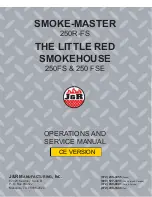
EN - 23
5. CLEANING AND
MAINTENANCE
5.1 Cleaning
WARNING:
Switch off the appliance
and allow it to cool before cleaning is
to be carried out.
General Instructions
• Check whether the cleaning materials
are appropriate and recommended by
the manufacturer before use on your
appliance.
• Use cream cleaners or liquid cleaners
which do not contain particles. Do not
use caustic (corrosive) creams, abrasive
cleaning powders, rough wire wool or
hard tools as they may damage the
cooker surfaces.
Do not use cleaners that contain
particles, as they may scratch the glass,
enamelled and/or painted parts of your
appliance.
• Should any liquids overflow, clean them
immediately to avoid parts becoming
damaged.
Do not use steam cleaners for cleaning
any part of the appliance.
Cleaning the Inside of the Oven
• The inside of enamelled ovens are best
cleaned while the oven is warm.
• Wipe the oven with a soft cloth soaked
in soapy water after each use. Then,
wipe the oven over again with a wet
cloth and dry it.
• You may need to use a liquid cleaning
material occasionally to completely
clean the oven.
Catalytic Cleaning
Catalytic liners are installed within the oven
cavity. These are the matte-finished, light-
coloured panels on the sides and/or the
matte-finished panel at the rear of the oven.
They work by collecting any grease and oil
residue during cooking. Catalytic liners are
designed to have a working life of about
300 hours.
The liner self-cleans by absorbing fats and
oils and burning them to ash, which can
then be easily removed from the floor of
the oven with a damp cloth. The lining must
be porous to be effective. The liner may
discolour with age.
If a large amount of fat is spilled onto
the liner it may reduce its efficiency. To
overcome this problem, set the oven to
maximum temperature for about 20 - 30
minutes. After the oven has cooled, wipe
out the floor of the oven.
Manual cleaning of the catalytic liners is not
recommended. Damage will occur if a soap-
impregnated steel wool pad or any other
abrasives are used. In addition, we do not
recommend the use of aerosol cleaners on
the liners. The walls of a catalytic liner may
become ineffective due to excess grease.
The excess grease can be removed with
a soft cloth or sponge soaked in hot water
and the cleaning cycle can be carried out
as described above.
Removal of Catalytic Liner
To remove the catalytic liner, remove the
screws holding each catalytic panel to the
oven.
Cleaning the Gas Hob
• Clean the gas hob on a regular basis.
• Take off the pan supports, caps and
crowns of the hob burners.
• Wipe the hob surface with a soft cloth
soaked in soapy water. Then, wipe the
hob surface over again with a wet cloth
and dry it.
• Wash and rinse the hob-burner caps.
Do not leave them wet. Dry them
immediately with a dry cloth.
• Make sure you re-assemble all parts
correctly after cleaning.
• The surfaces of the pan supports may
Summary of Contents for CECM6065B
Page 152: ...52278455 www continentaledison fr ...







































